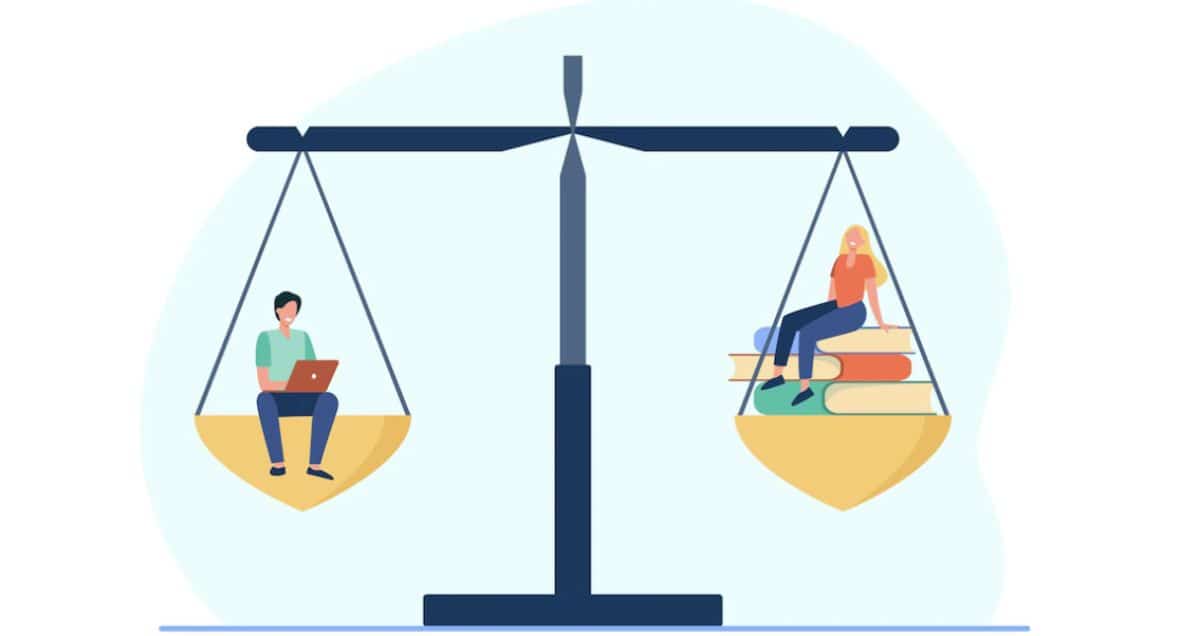From Aspiration to Profession: A Guide to Become Physiotherapist
A Physiotherapist helps people with physical problems caused by sickness, accidents, or aging. They use medications, movement, sports massage, therapy, and exercise to treat patients. Physiotherapists use different treatment plans to ease discomfort and help patients regain movement. They work with people with chronic conditions or illnesses recovering from surgeries. According to a 2018 survey […] The post From Aspiration to Profession: A Guide to Become Physiotherapist appeared first on Chegg India.

A Physiotherapist helps people with physical problems caused by sickness, accidents, or aging. They use medications, movement, sports massage, therapy, and exercise to treat patients. Physiotherapists use different treatment plans to ease discomfort and help patients regain movement. They work with people with chronic conditions or illnesses recovering from surgeries.
According to a 2018 survey by WHO, there should be one physiotherapist for every 10,000 Indians; however, there is a shortage of more than 90,000 therapists. The physiotherapy market is valued at $0.96 billion in 2022 and is estimated to rise to $1.96 billion by 2023, depicting a CAGR of 8.95%. With the rising demand for physiotherapists, if you are wondering how to become a physiotherapist, this guide will help you.
To become eligible for a physiotherapy course, candidates must pass their 10+2 exams with at least 50% marks. It is essential to have higher secondary education in Physics, Chemistry, and Biology. After that, they can pursue undergraduate or postgraduate Physiotherapy courses.
Some popular courses are Bachelor of Physiotherapy, B.Sc. in Physiotherapy, and Masters in Physiotherapy. Candidates can also take certification or diploma courses in physiotherapy. Admissions to these courses are based on entrance exams like NEET PG, CET, and BCECE. Besides having educational skills, physical stamina, treatment planning, and teamwork skills are also essential to becoming a successful physiotherapist in India.
After clearing in physiotherapy course, physiotherapists earn an average salary of INR 3.08 LPA. They work in various roles such as Sports Physio Rehabilitators, Osteopaths, Researchers, and in Defense Medical Centers. They can find jobs in fitness centers, NGOs, hospitals, and other places. This blog discusses everything about physiotherapists and physiotherapy course details.
Specializations in Physiotherapy
Physiotherapy is a wide field with various specializations that candidates can pursue to specialize their skillset in a particular field and unlock myriad opportunities. Each specialization brings unique skills and techniques to help individuals regain function, reduce pain, and improve their overall quality of life. Here are some specializations that you can consider under a physiotherapy course:
1. Orthopedic Physiotherapy:
Orthopedic Physiotherapy focuses on orthopedics and treatment affecting the musculoskeletal system. Here are the responsibilities of the orthopedic physiotherapist:
- They treat musculoskeletal conditions and injuries.
- Involves assessment, diagnosis, and treatment of orthopedic issues.
- Includes conditions like fractures, sprains, strains, and post-surgical rehabilitation.
- Uses techniques of manual therapy, exercise prescription, and therapeutic modalities.
2. Neurological Physiotherapy
Neurological Physiotherapy treats neurological conditions to regain or maintain the maximum movement functional dependence. Here are the responsibilities of neurological physiotherapists:
- Deals with conditions related to the nervous system.
- Targets impairments caused by diseases or brain, spinal cord, or nerve injuries.
- Aims to improve mobility, coordination, and functional independence.
- Utilizes techniques like gait training, balance exercises, and neurological re-education.
3. Cardiopulmonary Physiotherapy
Cardiopulmonary Physiotherapy uses manual techniques to clear mucus from a person’s chest or non-invasive treatments to help a person breathe and improve breathing capacity. Here are the responsibilities of a Cardiopulmonary Physiotherapist:
- Cardiopulmonary Physiotherapist manages heart and lung disorders
- Focuses on improving respiratory function and cardiovascular health.
- Involves breathing exercises, airway clearance techniques, and cardiovascular conditioning.
- Aids reduces shortness of breath, increases exercise tolerance, and enhances overall well-being.
4. Sports Physiotherapy
Sports and Exercise Physiotherapy deals with preventing and managing injuries due to sports and exercise participation for all stages and all sports. Here are the responsibilities of a sports physiotherapist:
- They concentrate on sports-related injuries.
- Works with athletes of all levels and ages.
- Emphasizes rehabilitation and performance enhancement.
- Utilizes techniques like sports-specific exercises, taping, and injury prevention strategies.
5. Pediatric Physiotherapy
Pediatric Physiotherapy assesses, identifies, diagnoses, and treats physiological impairments in infants and children. Here are some responsibilities of pediatric physiotherapists:
- Specifically addresses the needs of infants, children, and adolescents.
- Deals with developmental delays, congenital conditions, and childhood injuries.
- Focuses on promoting motor skills, balance, and coordination.
- Incorporates play-based activities and family involvement in the therapy process.

Steps to Become a Physiotherapist
Knowing the educational qualification is crucial in learning how to become a physiotherapist. If you are interested in getting a physiotherapist qualification, here is how you can become one:
Step-1: Complete your secondary and higher secondary education.
To get into a physiotherapy course, you must finish your 10+2 with at least 50% marks. Make sure you choose physics, chemistry, and biology as your main subjects. You can choose math as an optional subject, but physics, chemistry, and biology are required. A strong foundation in science subjects is necessary to become a qualified therapist.
Step-2: Earn a bachelor’s degree.
Once you finish your 10+2, consider studying physiotherapy or a related field. You can choose between getting a Bachelor of Physiotherapy (BPT) or a diploma in physiotherapy. To get into these programs, you need to pass different entrance exams. The four-year Bachelor’s program involves a required six-month internship. The diploma physiotherapy course duration is three years long. You will learn about exercise therapy, sociology, physiotherapy orientation, clinical training, and other related subjects during your studies.
Step-3: Pursue a master’s degree.
Thinking about a master’s degree in physiotherapy after your Bachelor’s degree is great! You can get a Master of Physiotherapy (MPT) or a postgraduate diploma (PG). The physiotherapy course duration is two years, and you must pass an entrance exam to join. During these courses, you can specialize in different types of physiotherapy. Getting a master’s degree helps you earn more money. Researching accredited institutions is important in understanding how to become a physiotherapist.
Step-4: Gain experience
During your Bachelor’s physiotherapy course, completing a six-month training and getting experience is best. You can gain experience by working in a medical facility, hospital, or clinic. Start your career as a physiotherapist with athletic teams, small clinics, and sports teams.
Work in special schools and care homes to show dedication and gain valuable experience. Hospitals and medical facilities prefer professionals with relevant experience. Understand the role and research the industry to get hired faster. Research the role and industry to improve your chances of getting hired quickly. Internships and clinical rotations provide valuable hands-on experience in the journey of how to become a physiotherapist.
Step-5: Create your resume and apply for jobs.
Once qualified and experienced, apply for jobs matching your skills. Show your abilities, education, and your skillset on your resume. Include your clinical experience to make yourself a stronger candidate. Use keywords from the job description and tweak your resume for each job. When your resume is ready, apply for roles on job websites. Registering with professional associations is a step to consider when understanding how to become a physiotherapist. Networking with other professionals in the field can provide guidance and support throughout how to become a physiotherapist.
Skills and Qualities Required to Become a Physiotherapist
Here is a list of essential skills and qualities that will help to become a successful and qualified physiotherapist:
1. Physical strength
You must be strong and agile to perform physical therapy treatments and exercises. Helping patients sit, walk, or stand requires physical strength. Physiotherapists must have the endurance and strength to work with patients all day.
2. Communication skills
Good communication is important in this role. It helps you ask the right questions and understand patients’ problems. Clear communication is also essential for teaching patients about physical therapy. You’ll need strong writing skills to complete detailed progress reports.
3. Patience
Physiotherapists work with patients in pain or recovering from injuries. Patience is important to treat these patients and improve their mobility. You need to adjust treatment plans based on patient condition changes.
4. Organization
Being organized helps you find the equipment and supplies you need for therapy sessions. It also helps you keep track of schedules and records for each client. Excellent time management skills help break down goals into manageable tasks.
5. Problem-solving
To understand a patient’s condition you need to have good problem-solving skills. You’ll use your knowledge and problem-solving abilities to create treatment plans and exercises. Being able to solve problems calmly and confidently is important for a physiotherapist.
6. Sensitivity and empathy
Some patients may be in distress or pain but may not express it. Your sensitivity can help you understand their condition and provide appropriate treatment. Empathy is important for connecting with patients and meeting their needs. Building a strong relationship and aiding in full recovery are supported by sensitivity and empathy.
Responsibilities of a Physiotherapist
Physiotherapists play an important role in helping individuals. Let’s delve into the detailed roles and responsibilities of a physiotherapist:
1. Assessment and Evaluation
Here is what is included in the assessment and evaluation:
- Conduct thorough assessments to understand patients’ physical conditions, limitations, and medical histories.
- Evaluate patients’ strength, range of motion, posture, balance, and other relevant factors.
- Use specialized tests and measurements to identify areas requiring intervention and develop personalized treatment plans.
2. Treatment Planning and Implementation:
Here is what is included in treatment planning and implementation:
- Design individualized treatment plans tailored to each patient’s unique needs and goals.
- Utilize various therapeutic exercises, manual therapy techniques, and modalities to improve mobility, relieve pain, and enhance functionality.
- Implement treatment interventions such as electrotherapy, hydrotherapy, heat or cold therapy, and therapeutic ultrasound.
- Teach patients to perform exercises and techniques correctly, ensuring proper form and safety.
3. Rehabilitation and Physical Therapy
Here is what is included in rehabilitation and physical therapy:
- Assist patients in regaining physical strength and function following injuries, surgeries, or medical conditions.
- Provide rehabilitation services for individuals.
- Use specialized rehabilitation exercises and techniques to restore mobility, enhance coordination, and improve overall functional abilities.
- Collaborate with occupational therapists and speech therapists to ensure comprehensive rehabilitation care.
4. Pain Management
Here is what is included in pain management:
- Develop strategies and techniques to alleviate pain and discomfort in patients.
- Implement therapeutic modalities like TENS (Transcutaneous Electrical Nerve Stimulation) and ultrasound to relieve pain and promote healing.
- Teach patients pain management techniques, including relaxation exercises and proper body mechanics.
5. Assistive Devices and Mobility Aids
Here is what is included in providing assistive devices and mobility aids:
- Evaluate patients’ need for assistive devices like crutches, walkers, or wheelchairs.
- Recommend appropriate mobility aids to enhance independence and safety.
- Train patients on the correct usage of assistive devices and provide ongoing support and adjustments as needed.
6. Documentation and Reporting
Here is what is included in the documentation and reporting:
- Maintain accurate and comprehensive patient records, including assessments, treatment plans, progress notes, and outcomes.
- Collaborate with healthcare teams to ensure effective communication and continuity of care.
- Prepare detailed reports for referring physicians or healthcare professionals regarding patients’ progress and treatment outcomes.
7. Research and Continuing Education
Here is what is included in research and further education:
- Stay updated with the latest advancements in physiotherapy through ongoing education and professional development.
- Conduct research studies to contribute to evidence-based practices in physiotherapy.
- Engage in peer-reviewed publications and presentations to share knowledge and expertise.
8. Professional Ethics and Standards
Here are some professional ethics and standards that physiotherapists learn during physiotherapy courses:
- Adhere to ethical guidelines and maintain the confidentiality of patient information.
- Practice within the legal and professional boundaries defined by the regulatory bodies.
- Uphold the highest professionalism, integrity, and compassion standards in patient care.
Physiotherapist Salary in India
Here are the average salaries for physiotherapists at different stages of their careers:
Beginners:
As a fresh graduate, you can expect an average salary ranging from Rs. 15,000 to Rs. 25,000 per month. With time and gaining experience, your salary can gradually increase as you prove your skills and competence in the field.
Intermediate Roles:
In intermediate roles, which typically include positions such as senior physiotherapist or team leader, you can expect an average salary ranging from Rs. 30,000 to Rs. 50,000 per month.
These roles often come with added responsibilities, such as supervising junior staff, managing patient care plans, and handling a broader range of cases.
Advanced Roles:
Physiotherapists in advanced roles with significant experience and specialized knowledge can earn higher salaries. In advanced roles, you can expect a salary of Rs. 60,000 to Rs. 1,00,000 or more per month. Advanced physiotherapists often hold leadership positions, work in prestigious hospitals, or establish their private practices. They may also engage in research, teach at universities, or provide consultancy services. Additionally, salaries may differ across different regions of India, with metropolitan areas typically offering higher compensation compared to rural areas.
Other Factors Influencing Salary
- Geographical Location: Salaries can differ based on the cost of living and demand for physiotherapists in a particular region.
- Type of Employer: Salaries may vary depending on whether one works in a government hospital, private clinic, corporate healthcare setting, or educational institution.
- Additional Qualifications: Obtaining advanced certifications or specializations can increase earning potential.
- Years of Experience: Experience plays a significant role in salary increments as one progresses in their career.
Wrapping up
The journey of how to become a physiotherapist begins with a passion. Becoming a physiotherapist in India requires comprehensive education, practical training, registration, and ongoing professional development.
Obtaining a good score in the entrance exams required for admission to a reputable physiotherapy course is essential. After that, they can pursue a Bachelor’s degree in Physiotherapy from a recognized institution. Additionally, it is advisable to participate in internships or clinical rotations during the study.
Is a physiotherapist a doctor? Then, physiotherapy is a medical branch that deals with rehabilitation and remedies to cure injuries; however, they are not doctors. A qualified physiotherapist helps in post-treatment covering by providing help and assistance to patients to get back to their normal routine after surgeries and operations.
Evaluate numerous career choices to choose the right career path for yourself. Dive in to our guide on Career Advice.
Frequently Asked Questions (FAQs)
It takes around 4 to 5 years to complete a physiotherapy course. This duration includes the completion of a Bachelor’s degree in physiotherapy. The curriculum also incorporates internships and clinical rotations to gain hands-on experience. After completing the Bachelor’s degree, individuals can register with the appropriate professional associations or councils to practice as a qualified physiotherapist.
No, NEET (National Eligibility cum Entrance Test) is not required for most physiotherapy programs in India. While NEET is mandatory for admission to medical and dental courses, physiotherapy is not typically required. However, it is important to note that some institutes may have their own entrance exams or selection criteria for physiotherapy courses. Check the specific requirements of the institutes you are interested in for accurate information regarding their admission process.
No, a physiotherapist is not a medical doctor. While they play a vital role in healthcare, physiotherapists do not hold a medical degree like doctors. Physiotherapists focus on rehabilitation and improving physical well-being, but they do not have the same level of medical training or the authority to diagnose and prescribe medications as medical doctors.
After completing 12th grade, then get Bachelor’s degree in physiotherapy. To be eligible for admission, focus on science subjects during your 12th-grade education. Look for reputable colleges or universities that offer a Bachelor’s program in physiotherapy. Prepare for entrance exams if required by the institute. Once admitted, you will undergo comprehensive training in theoretical knowledge and practical skills related to anatomy, physiology, biomechanics, and therapeutic techniques.
The post From Aspiration to Profession: A Guide to Become Physiotherapist appeared first on Chegg India.



























